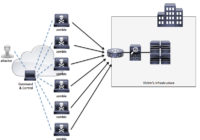IP block causes and solutions
Introduction: IP blocking, a common occurrence in online interactions, occurs when a specific IP address is restricted from accessing certain services or websites. This measure is often taken to mitigate security risks or to enforce compliance with terms of service. Understanding the causes behind IP blocks is crucial for resolving these issues effectively. Causes of… Read More »








